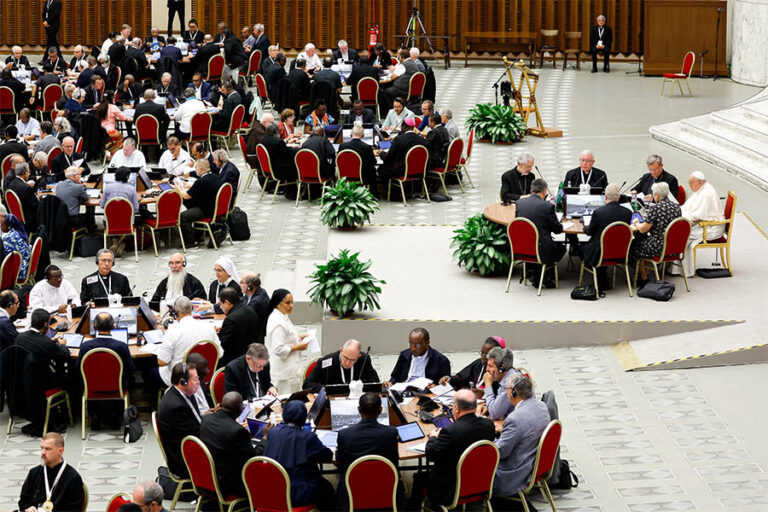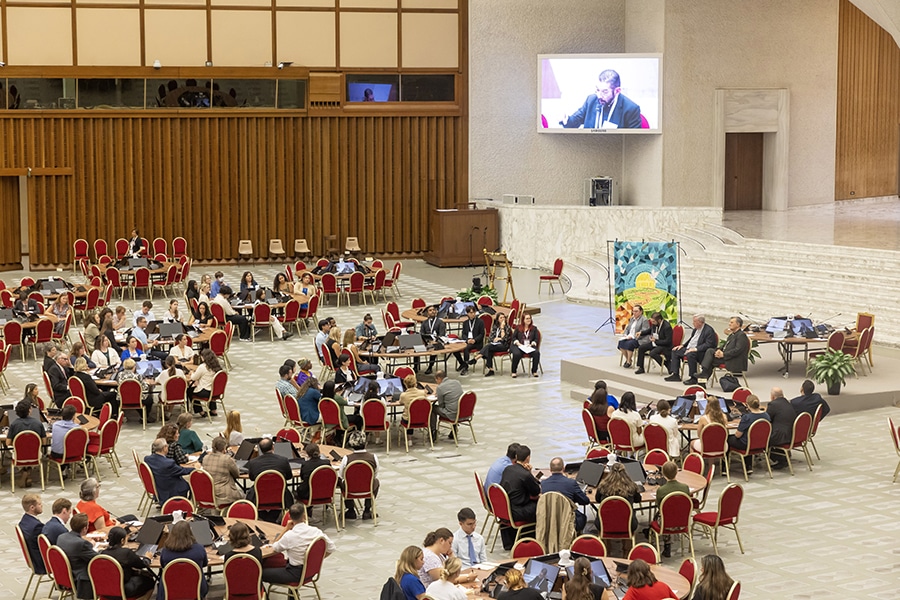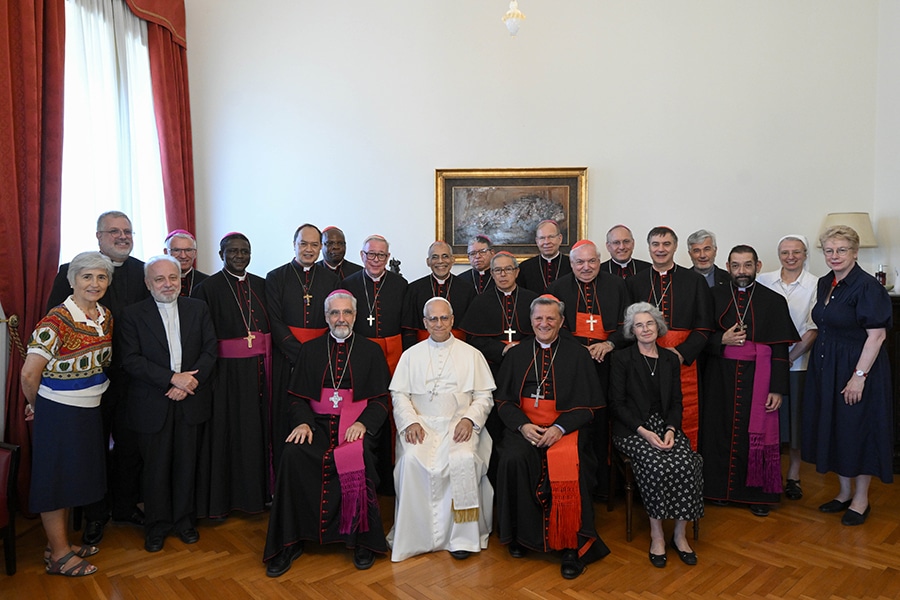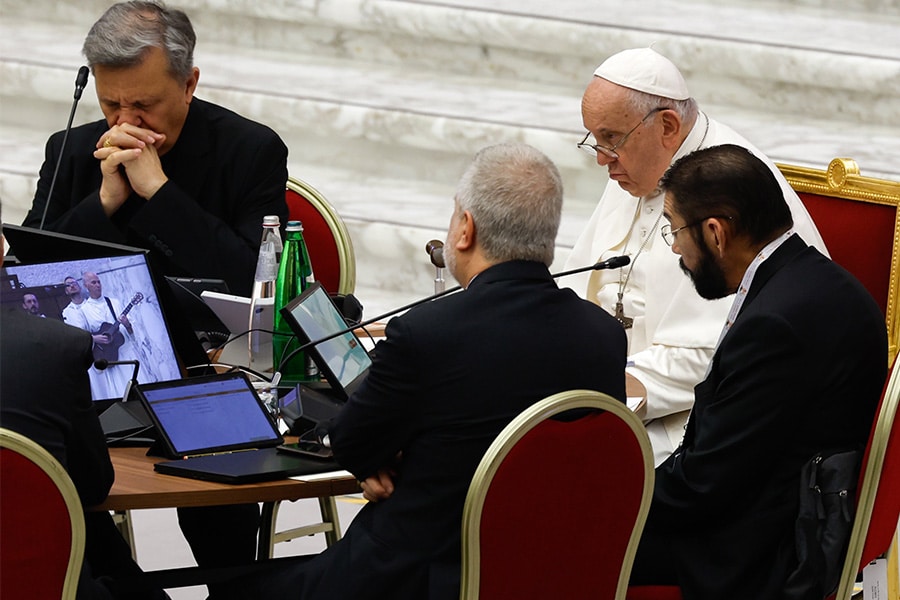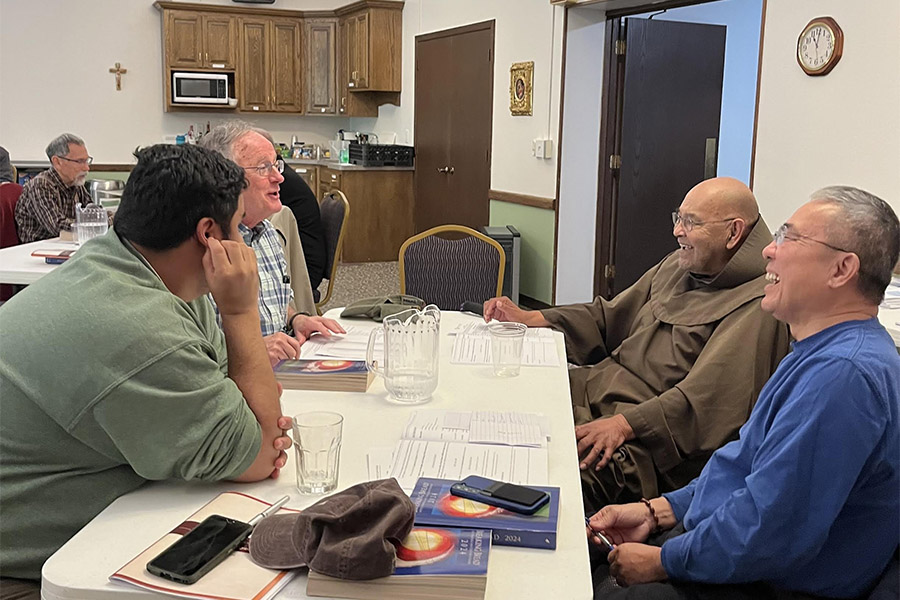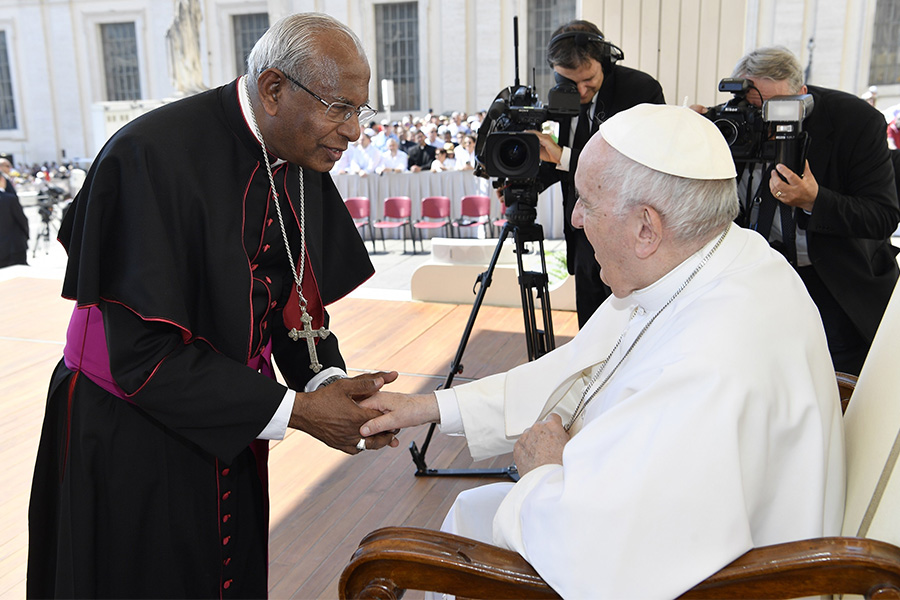What’s the path to authentic unity for a deeply polarized church? The Synod on Synodality’s Oct. 4-29 gathering in Rome is both modeling and providing an answer: through personal encounter and dialogue as disciples walking together with Jesus Christ in their midst.
Both personal encounter and dialogue in this equation absolutely require the centrality of Jesus Christ the Mediator and fullness of revelation, around whom and in whom all his followers meet. The church — as Jesuit Cardinal Jean-Claude Hollerich of Luxembourg, the relator general for the Synod of Bishops, said — is the “People of God, walking through history, with Christ in her midst.”
The synod has stressed the centrality of the participants having a living relationship with Jesus in order to encounter and talk with each other. The synod’s program — of retreats, periods of silence, common prayer and worship (experiencing the richness of the Catholic Church’s different rites), biblically rooted theological reflection, Eucharistic adoration, rosary and pilgrimage — invite participants into a deeper communion with Jesus as they look to deepen their communion with each other.
In his homily for the synod’s opening Mass Oct. 4, the feast of St. Francis of Assisi, the Holy Father reminded people that St. Francis, who mystically received the wounds of Jesus, “in order to clothe himself with him (Jesus), stripped himself of everything.” Pope Francis said it was only in prayer the saint heard Jesus’ call, “Go and repair my church.”
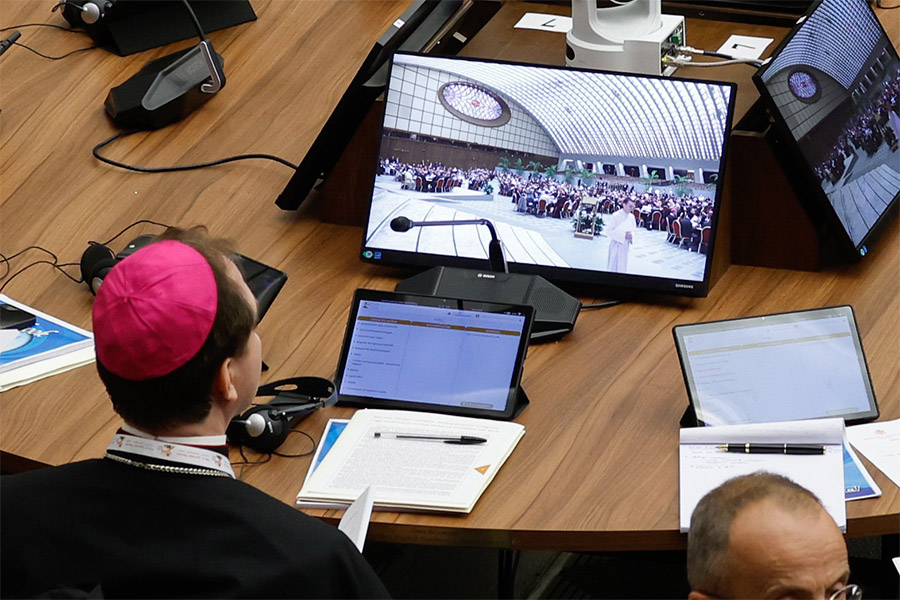
Pope Francis said the synod serves to remind all the faithful that the church is always in need of “purification, of being ‘repaired,'” and “always in need of returning to the source that is Jesus, and putting ourselves back on the paths of the Spirit to reach everyone with his Gospel.”
The synod’s participants have directly spoken to the polarization in the church that is mirroring society — and how authentic communion rooted in Christ brings people, even amid disagreement, whether or not they identify as traditionalist or progressive, into harmony.
Dominican Father Timothy Radcliffe’s Oct. 9 reflections shared with synod delegates focused on how life-changing personal encounters with Jesus freed people trapped in sin, longing for God, and transformed them into passionate evangelists, such as the woman at the well in John 4.
He emphasized that “love is personal and hatred is abstract.”
Father Radcliffe also noted how many people in the church feel marginalized because they are labeled, such as the “divorced and remarried, gay people, refugees, Africans, Jesuits!” But he also indicated how easy it is for people in the church, who recognize this, to have blind spots of their own. He mentioned how a friend, venting to him about labels that put people in boxes, then told him, “I cannot abide these conservatives.”
The Dominican priest emphasized it was essential to be “formed for deeply personal encounters with each other, in which we transcend easy labels.” He explained that “if you really meet someone, you may become angry, but hatred cannot be sustained in a truly personal encounter. If you glimpse their humanity, you will see the one who creates them and sustains them in being, whose name is I AM.”
One can see the physical design choices of the synod hall working to this end. All the participants — who have different views on various issues they are passionate about — are physically sitting at round tables called “small circles.” It’s a choice that physically reinforces both their shared humanity and common baptism.
Personal encounter, rooted in Christ, sets the stage for the church’s members to have an authentic dialogue, because an exchange of the truth within the context of love is now possible. Father Radcliffe said St. Paul and St. Peter had open disagreement, and that was not the problem. What St. Paul could not abide in the church were those who “gossipped and worked secretly … hiding who they were with deceitful smiles.”
Pope Francis also made clear the synodal process should change the church’s culture of fear of telling each other the truth that fuels gossip, which he called “the most common disease in the church.” He said disagreement should be done “to their face.”
“That’s what a synod is for,” he said. “To tell the truth; not for talking behind people’s backs.”
At the same time, the synod process is also modeling that while the church has important questions to discuss, the centrality of Jesus Christ provides not just the common ground for dialogue but also the boundaries within which fruitful discernment can take place.
As Cardinal Hollerich pointed out, the synod does “not start from scratch.” One can see the reason for this again is Jesus. As the Second Vatican Council teaches, Jesus is “both the mediator and the fullness of all revelation.” And the church, as St. John Paul II said, “cannot do other than proclaim the Gospel, that is, the fullness of the truth which God has enabled us to know about himself.”
Comparing the church’s language to grammar, Cardinal Hollerich said that while language develops over time, “in grammar there are some basic rules which never change.” For the synod, the cardinal explained “the rules of Catholicity” — such as baptismal dignity, the role of the pope, episcopal collegiality, ordained ministry and the common priesthood (and how they relate to each other) — are those basic never-changing rules.
“With these fundamental elements of our Catholic grammar, we have to find the way to express the new insights the Holy Spirit gives us.”
As the synod continues, participants will have to discern for the pope concrete proposals for how the church can develop this culture of communion all the way down to the local level, and what effective means can reinforce and sustain it for the sake of the church’s mission.
But developing this authentic culture of dialogue and personal encounter rooted in Christ requires people to model it so others may imitate it.
There are glimpses of this already emerging from the synod. Each of the small circles are working on themes from the synod’s working document — and small circle number 28, which the National Catholic Register reported, focuses on LGBTQ+ issues. But the Register noted its “source said the delegates were evenly balanced between those wanting more accommodation on the same-sex issue and those who were opposed.”
A photo illustrates even more what their communion looks like between Catholics in the church who disagree on important points: Jesuit Father James Martin tweeted out Oct. 12 a photo of that small circle standing around their table and smiling. He wrote, “We are from all over the world, from many countries and cultures, with many perspectives, yet united in Christ.”
Overcoming polarization to develop authentic communion between the members of the church, whom Jesus made into members of his body, has implications for the church finally growing into that community of supportive “missionary disciples” who are “permanently in a state of mission,” as Pope Francis described 10 years ago in “Evangelii Gaudium.”
As Cardinal Hollerich told the synod hall Oct. 13, “this development of communion is not closed in on itself, but is impelled towards mission.”
And the goal of that mission, he said, “is precisely to extend the scope of communion, enabling more and more people to meet the Lord and accept his call to be part of his people.”
Read More Synodality
Copyright © 2023 OSV News

